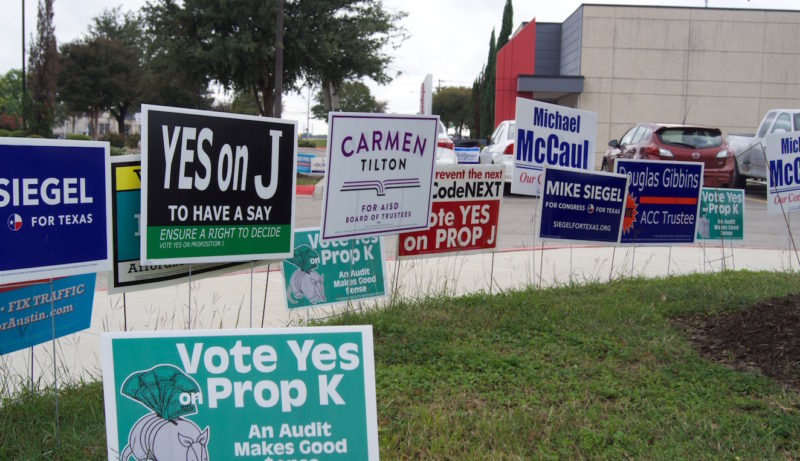In May 2019 the Texas Legislature enacted SB 2, the Property Tax Reform and Transparency Act, which limits the amount that a local government may raise its taxes before triggering a rollback election.
The idea is to give voters, especially homeowners, a say in whether their taxes go up significantly or not. The new law lowers the old revenue growth cap of 8% to 3.5%. If a local government adopts a tax rate that would grow revenue higher than this cap, then voters get a chance to nix the increase.
To supporters, the new law makes the state’s tax system more democratic by giving voters the final say on tax hikes. It changes the political dynamics around how taxing and revenue decisions are made, imposing a political cost on local elected officials wishing to raise taxes.
City council members and county commissioners who previously had been able to hike rates by simple majority vote now will be forced to go out to campaign for those increases.
SB 2 follows a long American tradition of placing checks on the power of representative government. But it also runs counter to another foundational principle of American and Texan government that has played a role in making these systems comparatively well-functioning and long-lasting: the value of simplicity in a constitutional and political system.
Put simply: overly complicated systems of government don’t do well under strain. Think how much more dysfunctional Washington would be if there were, say, five co-equal branches of government rather than three. As it is, a system of three branches seems quite complex enough.
The complexities of a system can inhibit action on even common-sense decisions. This is on display in certain developing economies, where top-heavy bureaucracies slow the pace of business and investment and add to cost without necessarily adding value to the process.
Tending the Bureaucracy
Overly complex systems also tend to foster the growth of specialized bureaucratic classes to tend them, displacing the citizen leaders who are needed to serve on appraisal district boards, appraisal review boards, city councils, and other local bodies.
SB 2 introduces several complex bureaucratic elements. At the state level, it imposes additional burdens of oversight on the Office of the Comptroller, requiring it to carry out biennial reviews of every appraisal district for compliance with state-established “standards, procedures, and methodology.”
At the local level, the law requires elaborate accounting and calculations in order to decide whether a rollback election is even needed. The basic formulae for calculating the rollback tax rate (officially now the ‘voter-approval tax rate’), and the effective tax rate (now the ‘no-new-revenue tax rate’) involve assessments of the current and new property valuations, last year’s levy, lost property levy, current debt rate, last year’s maintenance and operations expense, and unused increment rate.
Got that?
These ‘basic’ formulae then need to be adjusted for certain allowances, including for new revenue needed by a county to pay for qualifying indigent defense expenditures, or for county hospital expenditures.
Little Room for Maneuver
The complexity and rigidity of this system lead me to question how well it would hold up under strain. For example, what would happen in a county hit by a hurricane or an epidemic? This situation could result in greater financial need on the part of a local government, in which case raising taxes without an election would be preferable. It also could make it difficult for the government to maintain the functionality of the tax system itself, if, say, records or administrative personnel were lost or displaced.
The Texas Legislature has tried to mitigate such risks by exempting disaster-declared zones from the requirements of SB 2 for a one to three year period. But this does not take into account the possibility of a public crisis of some kind that the governor or president fails to declare as a disaster. Nor does it take into account the possibility of a crisis that is political in nature, or a crisis of public trust. Consider the possibility of a politically divided locality that is required to hold rollback elections over and over again throughout the course of, say, a politically turbulent decade. How much would that cost?
The whole rollback system depends on the smooth functioning of a variety of distinct and complex components – proper collections and accounting, a well-running appraisal and appeals process, a functioning arbitrations system, etc. If any one of these component systems broke down, it would lead to a loss of public confidence in the entire system.
These may seem like unlikely scenarios, but structural changes in government should take the unlikely into account. The far-seeing imagination of America’s constitutional fathers is a key reason why the structure that they created has survived and stayed relevant for as long as it has. In order to endure, a system should be operable in bad times as well as in good.
SB 2 may provide relief to homeowners assailed year after year by rising property valuations and rate increases, but it creates long-term structural risks. In passing SB 2, Texas legislators have placed their trust in the voters to hold a veto over property tax hikes. The question now is whether that power ends up being a blessing to the voters – or a headache.
